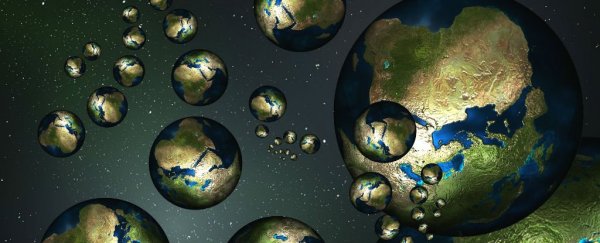President Donald Trump has acted on his campaign promises to reverse Obama's environmental policies and proposed a budget that would significantly slash the Environmental Protection Agency's funding in an effort to take federal responsibility out of environmental regulations.
More recently, White House officials have met to discuss whether the United States should leave the Paris climate agreement.
The United States is one of the world's biggest consumers, and US policies can have global environmental effects.
As of 2013, the world's population would need 1.7 Earths to support its demands on renewable natural resources, according Global Footprint Network, a nonprofit organisation that calculates human demands on the planet's ecosystems.
 The Washington Post
The Washington Post
Global Footprint Network measures human consumption relative to what the planet can regenerate with a measure called the ecological footprint.
The footprint takes into account how much in biological resources, such as fishing grounds and forest land, are necessary to fulfill the consumption of a country and absorb its waste. This includes imports and excludes exports. The smaller a country's footprint is, the better.
A country also has a biocapacity - that is, the country's capacity to renew the resources demanded from its ecosystems.
Because this measure is based on technology and land-management practices, biocapacity may change from year to year. The bigger a country's biocapacity is, the better.
Therefore, a country has an ecological deficit if its ecological footprint is greater than its biocapacity and ecological reserve if its biocapacity is greater.
How we got here
Of the countries running the highest ecological deficits, the United States has one of the highest biocapacities. This means that even though the country has a lot of resources, its consumption is still highly unsustainable.

 The Washington Post
The Washington Post
Since 2005, however, the United States has been decreasing its ecological footprint. Its fossil fuel use is the largest component of the nation's ecological footprint.
In 2013, the country's carbon footprint per capita reached its lowest since 1980. This may be the result, in part, of a smaller role that coal plays in the US economy.
 The Washington Post
The Washington Post
Within the United States, Virginia has the biggest ecological footprint per capita, nearly twice that of New York.
According to a report from Global Footprint Network, this is partly because of the greater density of New York, which allows for more efficient use of infrastructure, such as public transportation. Virginia also has a larger housing and personal transportation footprint per capita.
 The Washington Post
The Washington Post
Of the countries with the largest ecological reserves, most have biocapacities that are declining at a sharp rate. In other words, they may run into ecological deficits soon if the trend continues.
In some countries, this can be attributed to a combination of rapid population growth and deforestation.
 The Washington Post
The Washington Post
Which countries are developing sustainably?
Economic development often means using more resources and increasing carbon emissions. From 2000 to 2013, most countries increased their GDP and ecological footprints at the same time.
However, there are 48 countries that managed to develop sustainably: they increased GDP while decreasing their ecological footprints, though most of these countries saw small economic growth.
 The Washington Post
The Washington Post
For developing countries, an increase in ecological footprint may be necessary to bolster their economies. Footprints per capita in these countries may not be high to begin with, so small changes can cause a comparatively big jump.
Sustainable technology may also not be as widely available in developing countries.
For developed countries, the opposite may be true: Because their rate of growth is decreasing and most already have large footprints, fluctuations might not be so obvious.
Though there are many solutions, the fastest way for a country to reduce its ecological footprint, according to Global Footprint Network, is to switch to greener energy sources.
Even though the United States has been decreasing its ecological footprint, its consumption rate is still far from completely sustainable.
Sources: Global Footprint Network, United Nations and World Bank.
2017 © Washington Post
This article was originally published by The Washington Post.
